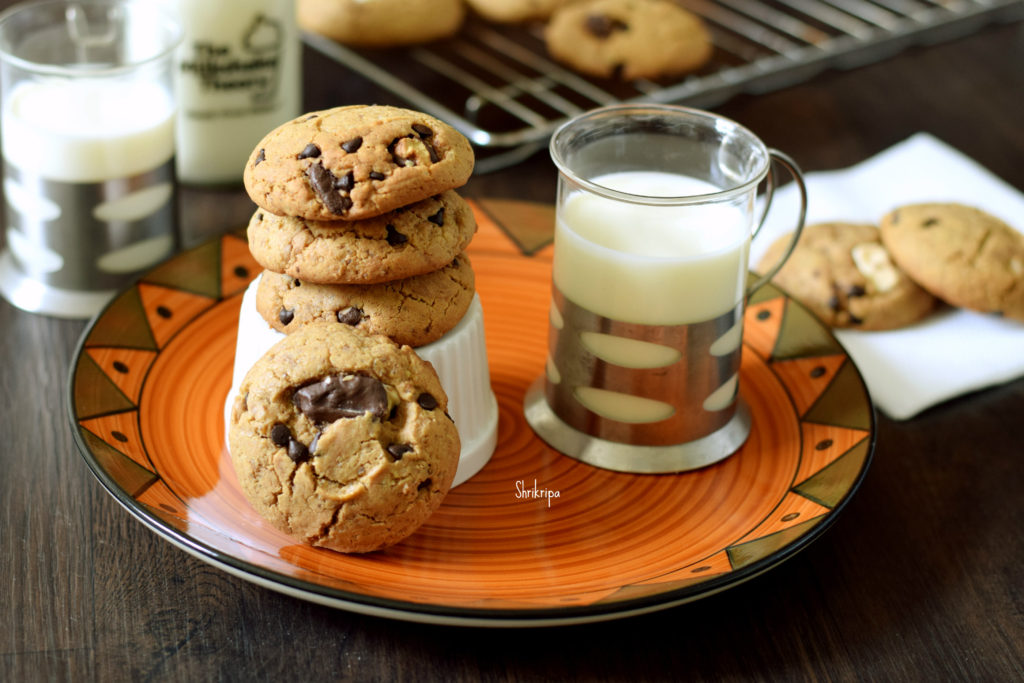Who doesn’t like Choco chip cookie? Let alone like, it is very difficult to resist. If it is guilt free, it is an added boon to relish these beauties. I usually don’t encourage my kids to have non-healthy stuff. It is the main reason I developed this recipe with lot of care.
It is a crunchy from the outside and soft from the inside kind of cookie. It has a whole wheat as well as protein rich Roasted gram powder, which is very nutritious and known as Sattu in India. Sattu is a powder form of roasted gram or Bengal gram or hurigadale in kannada. Added to this, I have added clarified butter/ ghee and ghee residue as well. To give more chocolatey appearance, added Choco chunks as well as chopped cooking chocolate.

How I proceeded is –
Ingredients:
Whole wheat flour – 1 cup
Roasted gram flour/ Sattu – ½ cup
Baking soda – 1 tea spoon
Sea salt – ½ tea spoon
Choco chip – ½ cup
Chopped chocolates – ½ cup
Ghee – ½ cup
Ghee residue – 2 table spoon (optional)
White sugar – ½ cup
Brown sugar – ½ cup
Eggs – 2
Vanilla extract – 1 tea spoon
Instant coffee powder – 1tea spoon
Method:
-Pre heat Oven at 180 °C, Line the baking tray with the butter paper.
-Take one bowl, dry whisk all the dry ingredients starting from Whole wheat flour, Sattu flour, Baking soda, sea salt, and Choco chips and chunks.

-In a Food processor or in another bowl, beat sugar, ghee and ghee residue first.
– Add in egg, vanilla, coffee and beat until it is frothy.
-Now pour this liquid over dry ingredient and mix by using spatula or clean hand.

– Scoop out the dough and place over the lined cookie sheet.
-Bake this in a pre-heated oven for 15 minutes or until done.

-When it is done, take out, cool a little and then store this in an air tight container.
-This yielded 18 big size cookies for me.
NOTE:
-Alternatively you can use only All purpose flour or whole wheat flour as well.
-Ghee residue is a moist, brown coloured by-product formed after preparing ghee from white butter.

































